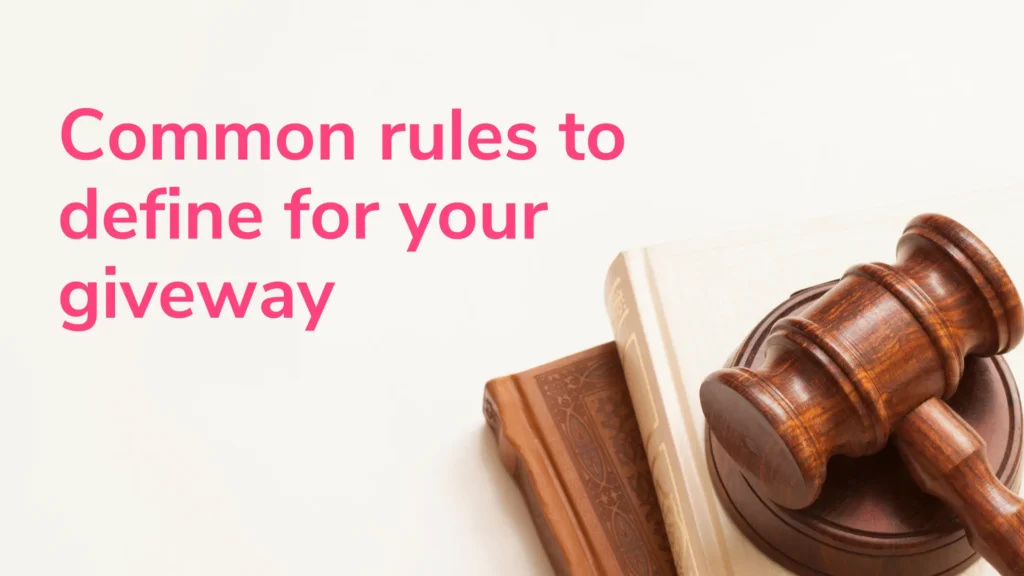With over 55 million Americans entering promotional contests annually, sweepstakes remain a powerful way for brands to connect with audiences. But behind the excitement of potential prizes lies a critical factor many overlook: the rules. These documents aren’t just formalities—they’re binding agreements shaping every aspect of participation.
Studies show most entrants skip reading contest terms, risking disqualification or missed opportunities. Key details like age restrictions, residency requirements, and submission deadlines often hide in plain sight. Even seemingly minor clauses—like social media tagging rules or prize redemption windows—can determine whether your entry counts.
Modern contests demand sharper strategies. Digital platforms introduce layers of complexity, from data privacy policies to automated entry systems. Savvy participants now treat rulebooks like roadmaps, scanning for sections on eligibility, judging criteria, and dispute processes. This approach helps avoid scams while identifying contests worth your time.
Key Takeaways
- Sweepstakes terms act as legal contracts between sponsors and entrants
- Eligibility requirements vary widely by location and contest type
- Entry methods often include hidden conditions beyond basic submissions
- Digital contests require understanding online data collection practices
- Systematic rule analysis improves entry success rates
- Updated knowledge of state-specific regulations prevents disqualification
Understanding Sweepstakes and Their Appeal
The allure of winning big with minimal effort drives millions to participate in promotional events. These campaigns blend entertainment with strategic brand exposure, creating win-win scenarios for both companies and consumers.
Defining Sweepstakes and Their Role in Marketing
Random-draw promotions serve as powerful engagement engines for businesses. Unlike skill-based competitions, winners get chosen by chance—a feature that levels the playing field for all entrants. This approach helps brands collect valuable consumer data while boosting online visibility through social shares and email sign-ups.
"Well-designed promotions generate 3x more engagement than standard ads," notes a digital marketing strategist.
Benefits for Participants and Businesses
Participants enjoy risk-free opportunities to win high-value prizes, from tech gadgets to dream vacations. For organizations, these initiatives deliver:
- Expanded customer databases
- Enhanced social media presence
- Increased website traffic
Modern campaigns often use interactive formats like video challenges or app-based entries. The table below shows key differences between traditional and digital approaches:
| Aspect | Traditional | Digital |
|---|---|---|
| Reach | Local | Global |
| Entry Methods | Mail-in | Social media |
| Data Collection | Limited | Detailed analytics |
| Engagement | Passive | Interactive |
This evolution in promotional tactics helps brands create memorable experiences while gathering actionable market insights.
Analyzing Official Sweepstakes Rules
Every promotional entry carries legal implications most participants never consider. These binding agreements dictate everything from eligibility to prize distribution, creating enforceable obligations for both organizers and entrants.
The Importance of Detailed Terms and Conditions
Comprehensive documentation protects all parties in promotional campaigns. Clear entry procedures and eligibility criteria prevent misunderstandings, while defined dispute processes reduce legal risks. Sponsors use precise language to outline tax responsibilities and intellectual property rights.
How Official Rules Serve as a Contract
Courts consistently uphold promotional guidelines as valid agreements. A 2022 consumer law study found 83% of contest disputes get resolved through rulebook analysis alone. Key contractual elements include:
- Prize fulfillment timelines
- Liability limitation clauses
- Winner verification protocols
"Participation constitutes acceptance of all terms—even if entrants never read them," emphasizes consumer rights attorney Lisa Monterrey.
Organizers often designate winners as potential until completing affidavit requirements. This safeguards against invalid claims while ensuring compliance with state regulations. Always review these documents before entering any promotion.
How to Read Sweepstakes Rules Carefully
Navigating contest guidelines effectively separates successful entrants from disqualified hopefuls. Proper analysis transforms complex documents into actionable checklists. Start by locating seven critical components in every promotion’s terms.
Step-by-Step Guidelines for Rule Analysis
First, verify participation requirements. Many promotions exclude residents of specific states or employees in certain industries. Geographic restrictions often appear in small print but carry major consequences.
Next, dissect entry methods. Daily limits, platform-specific instructions, and technical formats (like hashtags or photo sizes) frequently trip up entrants. One missed step can invalidate weeks of effort.
- Examine prize details: Delivery costs and tax obligations may reduce perceived value
- Mark calendar alerts for submission cutoffs and response deadlines
- Review selection processes: Automated draws vs. judging panels require different strategies
"Treat guidelines like assembly instructions—skip a step and the whole structure fails," advises marketing compliance expert Dr. Ellen Pritchard. Her research shows 62% of rejected entries violate timeline specifications.
Finally, scan legal sections for data usage policies. Many promotions retain rights to use entrant content indefinitely. Understanding these clauses helps maintain control over personal information while competing effectively.
Breaking Down Legal Considerations in Sweepstakes
Promotional contests operate within a complex web of protections and obligations. Sponsors must balance marketing goals with strict adherence to consumer safeguards and regulatory standards. This legal framework ensures fairness while preventing deceptive practices.
Key Regulatory Disclosures and Consumer Protections
Federal trade laws require clear communication of essential contest details. Participants must see prize values, entry deadlines, and eligibility criteria upfront. Many states mandate free entry methods like mail-in options to ensure equal access.
Anti-discrimination clauses protect all potential entrants. A 2023 FTC report found 24% of promotions initially failed compliance checks due to unclear age restrictions. Sponsors must verify geographic eligibility and avoid targeting specific demographics.
"Proper documentation acts as both shield and compass—it protects brands while guiding participants through fair processes," explains attorney Marcus Whitfield.
Privacy policies remain critical in digital contests. Data collection practices must align with CCPA and GDPR standards. Winners often face tax implications, requiring sponsors to disclose financial responsibilities during entry.
Three pillars uphold compliant promotions:
- Transparent prize fulfillment timelines
- Alternative participation channels
- Professional legal review of all materials
Regular audits help maintain alignment with evolving standards. Brands that prioritize compliance build trust while minimizing litigation risks.
Navigating Federal Sweepstakes Laws and No Purchase Necessary Guidelines
Federal oversight shapes every aspect of promotional contests, with strict protocols protecting both brands and participants. Compliance requires understanding multi-agency frameworks that govern fair practices.
Federal Trade Commission and Other Agencies' Requirements
The Federal Trade Commission enforces core principles through its Deceptive Practices Prevention Act. Alongside the FCC, USPS, and DOJ, they ensure promotions avoid misrepresentation. Key mandates include:
- Clear prize value disclosures
- Ban on hidden entry restrictions
- Equal odds for all participation methods
Recent FTC cases show 37% of violations stem from unclear expiration dates. Sponsors must present material terms in plain language, avoiding complex legal jargon.
No Purchase Necessary and Alternate Means of Entry Explained
Federal laws regulations prohibit tying entries to payments. Free alternatives like mail-in submissions must match paid options in accessibility. Valid alternatives require:
- Identical entry limits
- No extra steps beyond purchase-based methods
- Postmark deadlines matching online cutoffs
A 2023 study found campaigns with simplified method entry options saw 28% higher compliance ratings. Brands benefit from streamlined processes while maintaining legal safety.
State-Specific Sweepstakes Regulations and Registration
Navigating state sweepstakes laws feels like decoding 50 different rulebooks simultaneously. Compliance becomes a high-stakes puzzle where missing one piece risks disqualification or legal action. Three states stand out for their unique requirements that shape national campaign strategies.
Critical Compliance Hotspots
New York enforces strict protocols for promotions with prizes exceeding $5,000 in value. Sponsors must register and secure bonds 30 days before launch. Florida accelerates this timeline to just 7 days for similar prize thresholds. Rhode Island takes a different approach, requiring registration for $500+ prize pools when local retail stores participate.
Specialized restrictions complicate multi-state campaigns:
- Maine bans health data collection from minors
- North Dakota restricts purchase-based skill contests
- Texas limits automatic entry methods
"State regulators increasingly scrutinize winner selection processes and data handling," warns compliance officer Derek Simmons. "Cross-border promotions demand military-grade coordination."
Smart organizers build campaigns around the strictest state requirements. This approach ensures universal compliance while avoiding last-minute registration scrambles. Regular audits of evolving laws prevent costly oversights in dynamic regulatory environments.
Understanding Sweepstakes Registration and Bonding Essentials
Legal compliance separates legitimate promotions from risky ventures. While not universally required, registration and bonding serve as vital safeguards in high-stakes contests. These processes ensure organizers meet obligations while protecting participants' interests.
When Registration Becomes Mandatory
States like New York demand formal registration for promotions with prizes exceeding $5,000 in value. Florida requires similar filings within seven days for major campaigns. Key triggers include:
- Multi-state eligibility
- High-value prize pools
- Retail partnerships
Organizers must disclose contest dates, entry methods, and winner selection processes during registration. This transparency helps authorities monitor compliance.
The Protective Power of Bonding
Bonding requirements act as financial safety nets. Sponsors secure funds matching the total prize amount, ensuring winners receive promised rewards. Three critical protections emerge:
- Guaranteed payout capabilities
- Legal recourse for unpaid claims
- Fraud prevention measures
Bond values often reflect regional regulations and promotion scales. This system balances sponsor flexibility with participant security, creating trustworthy environments for all involved.


